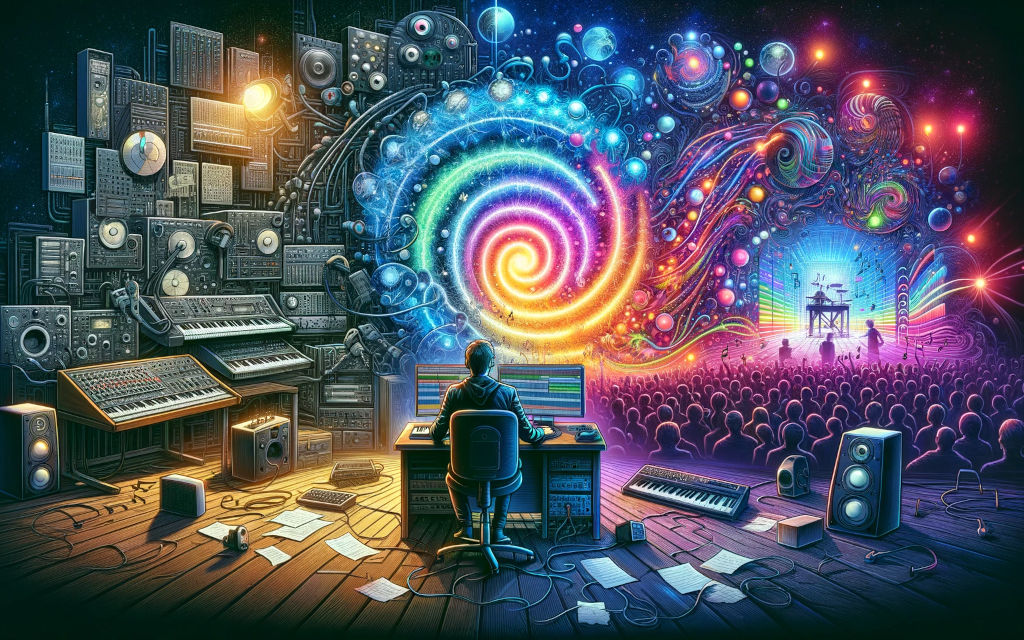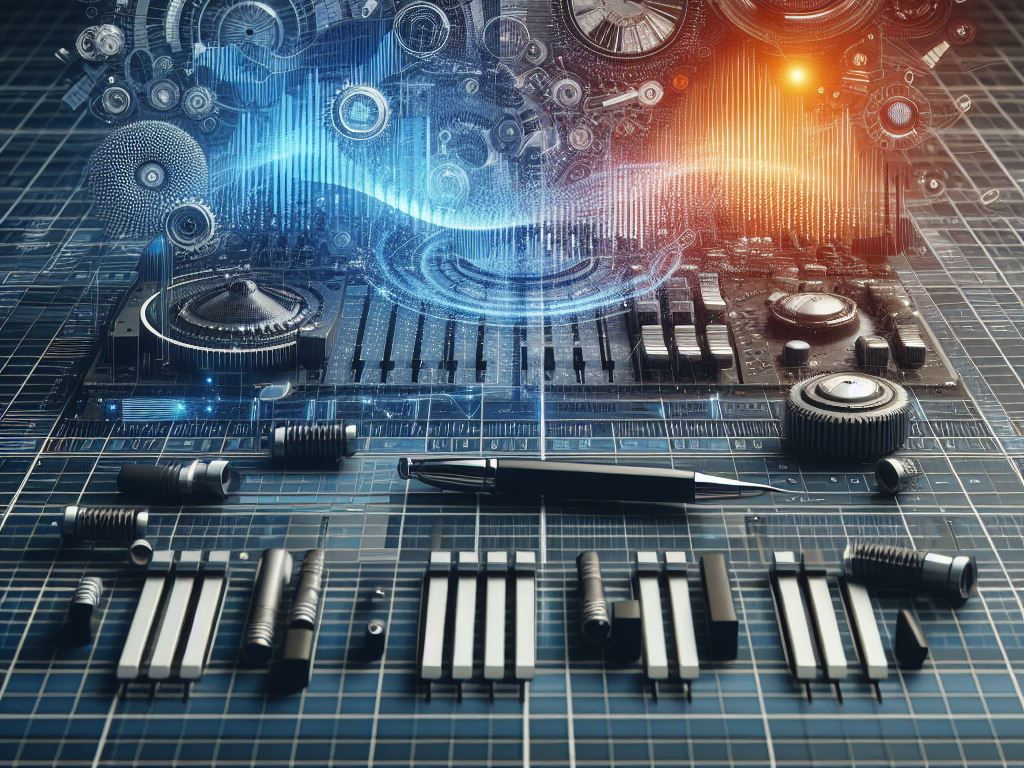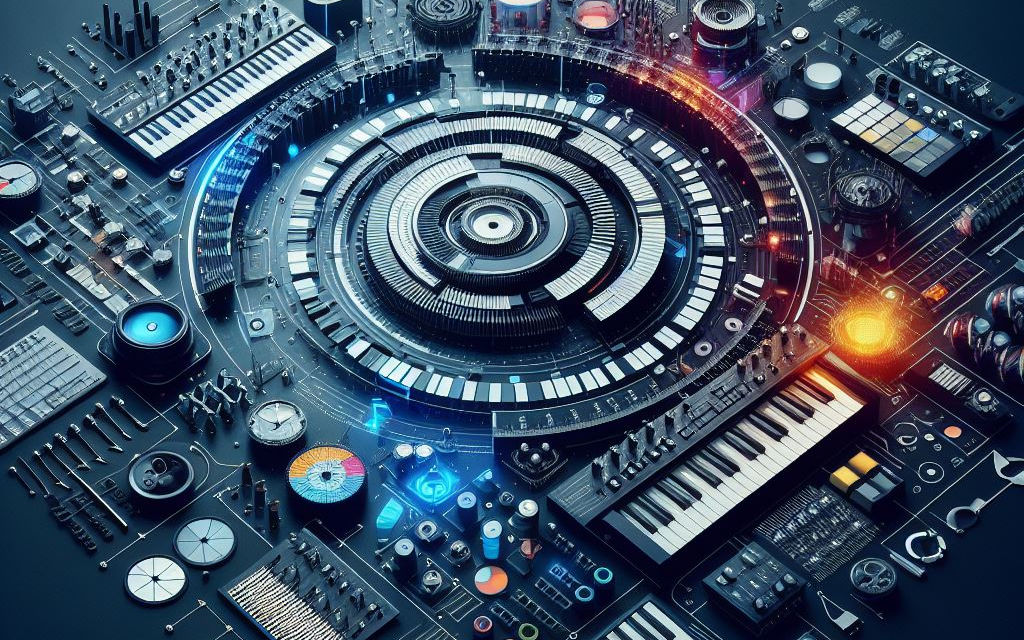
The Creative Process of an Electronic Music Producer
Electronic music is a diverse and ever-evolving genre that continues to captivate audiences worldwide. Behind every thumping bassline and mesmerizing melody lies the creative process of electronic music producers. In this blog post, we will take a deep dive into the intricate world of electronic music production, exploring the journey from conceptualization to track completion. Additionally, we will uncover how these talented producers find inspiration and develop their unique soundscapes.
The Stages of Creativity
Conceptualization
Conceptualization is the first and perhaps the most crucial stage of the creative process for an electronic music producer. It is where they envision the musical idea that will guide their production. This idea can be based on a specific concept, such as a theme, a message, or a story, or it can be driven by an emotion, such as joy, sadness, or anger. The source of inspiration can vary widely, depending on the producers personality, background, and goals. Some producers may find inspiration in their own life experiences, such as memories, dreams, or feelings. Others may look to nature, art, or culture for stimuli, such as sounds, images, or words. And some may explore other musical genres, styles, or artists for influences, such as rhythms, melodies, or techniques. Whatever the source, the producer needs to capture the essence of their inspiration and translate it into a musical form. This initial spark becomes the foundation upon which they build their sonic masterpiece, shaping the sound, mood, and structure of their track. Conceptualization is a challenging but rewarding stage, as it requires both imagination and discipline, as well as a balance between originality and coherence.

Sound Design
Sound design is the process of creating and manipulating sounds that suit the artistic vision of the producer. It is one of the most important and exciting aspects of electronic music production, as it allows the producer to express their creativity and originality.
The sound design phase usually begins after the producer has a clear idea of the concept and direction of the track. This may involve choosing a genre, a tempo, a mood, a theme, or a message. The producer then selects the tools and techniques that will help them achieve the desired sound.
There are many ways to create sounds for electronic music, such as:
- Synthesizing sounds from scratch using oscillators, filters, envelopes, LFOs, and other parameters. This gives the producer full control over the sound and its characteristics. Synthesizers can be analog, digital, or hybrid, and they can produce a wide range of sounds, from simple waveforms to complex and evolving textures. Some popular synthesizers are Serum, Massive, Sylenth1, and Operator.
- Sampling sounds from existing sources, such as recordings, instruments, vocals, or other tracks. This allows the producer to use sounds that are realistic, familiar, or nostalgic. Samples can be edited, processed, and manipulated to create new sounds or to fit the context of the track. Some common sampling techniques are slicing, looping, stretching, pitching, and reversing. Some popular samplers are Simpler, Sampler, Kontakt, and Harmor.
- Combining synthesis and sampling to create hybrid sounds that have the best of both worlds. This can be done by layering, blending, or modulating different sounds together. For example, a producer can use a sample as the carrier and a synthesizer as the modulator to create a frequency modulation (FM) sound. Some synths that can do this are Sytrus, FM8, and Alchemy.
The producer can use various effects to enhance, alter, or transform the sounds. He can also use various modulation sources to automate or vary the parameters of the sounds or the effects.
The producer can experiment with different combinations of these tools and techniques, and use their ears, intuition, and imagination to create sounds that match the mood and style of the track. There are no rules or limits to sound design, as long as the sound serves the purpose and the vision of the producer.

Arrangement
The arrangement is the backbone of any electronic music track. It is the way the producer organizes and sequences the different musical elements to create a dynamic and engaging flow. The arrangement is what makes the track tell a story, build tension and release, and evoke emotions in the listener.
There are many factors that influence the arrangement of an electronic music track, such as the genre, the style, the mood, the audience, and the purpose. Different genres and styles have different conventions and expectations for how the track should be structured and how long it should be. For example, a techno track might have a longer and more minimal intro and outro to facilitate DJ mixing, while a pop track might have a shorter and more catchy intro and hook. The mood and the audience also affect the arrangement, as the producer might want to create a different vibe and impact depending on whether the track is meant for a club, a radio, or a film.
However, there are also some common elements and principles that apply to most electronic music tracks, regardless of the genre or the style. These are:
- The intro: The intro is the first section of the track, where the producer introduces the main elements and sets the tone for the rest of the track. The intro should grab the listener’s attention and make them curious about what’s coming next. The intro can be simple or complex, depending on the producer’s preference and the genre’s norms. Some common elements that can be used in the intro are drums, bass, pads, atmospheres, effects, or vocals.
- The verse: The verse is the section where the producer develops the main theme and the groove of the track. The verse should maintain the listener’s interest and create some variation and contrast from the intro. The verse can have different sub-sections, such as A and B, where the producer can introduce new elements, change the rhythm, or modulate the harmony. Some common elements that can be used in the verse are synths, leads, melodies, chords, or vocals.
- The chorus: The chorus is the section where the producer delivers the climax and the main message of the track. The chorus should be the most memorable and catchy part of the track, where the listener feels the most emotion and energy. The chorus can also have different sub-sections, such as A and B, where the producer can emphasize different aspects of the theme, such as the melody, the harmony, or the vocals. Some common elements that can be used in the chorus are drums, bass, synths, leads, melodies, chords, vocals, or effects.
- The bridge: The bridge is the section where the producer creates a contrast and a break from the verse and the chorus. The bridge should be a surprise and a challenge for the listener, where the producer changes the mood, the key, the tempo, or the instrumentation of the track. The bridge can be used to create tension, suspense, or relief, depending on the producer’s intention and the genre’s conventions. Some common elements that can be used in the bridge are pads, atmospheres, effects, vocals, or instruments.
- The outro: The outro is the last section of the track, where the producer concludes the track and fades out the elements. The outro should be a satisfying and smooth ending for the listener, where the producer resolves the tension and the harmony of the track. The outro can be similar or different from the intro, depending on the producer’s preference and the genre’s norms. Some common elements that can be used in the outro are drums, bass, pads, atmospheres, effects, or vocals.
These are the basic elements of an electronic music track, but they are not fixed or rigid. The producer can experiment with different combinations, variations, and transitions, and create their own unique arrangement. The producer can also use different techniques and tools to enhance the arrangement, such as:
- Transitions: Transitions are the changes between different sections or sub-sections of the track. Transitions should be smooth and seamless, and create a sense of continuity and progression. Transitions can be achieved by using different methods, such as fades, cuts, crossfades, filters, effects, or automation.
- Contrast: Contrast is the difference between different elements or sections of the track. Contrast should be balanced and harmonious, and create a sense of diversity and interest. Contrast can be achieved by using different methods, such as volume, panning, EQ, compression, or distortion.
- Repetition: Repetition is the recurrence of the same or similar elements or sections of the track. Repetition should be consistent and coherent, and create a sense of familiarity and catchiness. Repetition can be achieved by using different methods, such as loops, patterns, motifs, or hooks.
These are some of the techniques and tools that can help the producer create a better arrangement for their electronic music track. However, the most important thing is to use their ears, their intuition, and their creativity, and to have fun and enjoy the process.

Production and Mixing
This stage is where the magic happens, as producers transform their raw ideas into polished tracks. Producers use various tools and techniques to refine the sound further, paying meticulous attention to the details. Some of the most common tools are effects processors, EQ, compression, and automation.
Effects processors are devices or software that alter the sound of an audio signal, adding character and movement. Some examples of effects are reverb, delay, chorus, flanger, phaser, distortion, and filter. Producers use effects to create space, depth, width, and interest in their tracks, as well as to enhance or contrast certain elements.
EQ, or equalization, is the process of adjusting the frequency balance of an audio signal, boosting or cutting specific ranges of frequencies. Producers use EQ to shape the tone and timbre of their sounds, as well as to fix any problems or clashes in the frequency spectrum. EQ can also be used creatively to emphasize or attenuate certain characteristics of a sound, such as brightness, warmth, or presence.
Compression is the process of reducing the dynamic range of an audio signal, making the loud parts quieter and the quiet parts louder. Producers use compression to control the level and consistency of their sounds, as well as to add punch, energy, and glue to their tracks. Compression can also be used to create dynamic effects, such as sidechain, ducking, or pumping.
Automation is the process of changing the parameters of an audio signal over time, such as volume, pan, effects, or any other control. Producers use automation to create variation, movement, and expression in their tracks, as well as to fine-tune the balance and transitions between different sections.
The mixdown process is akin to painting, with producers adding sonic colors and textures to create depth and clarity. The goal of mixing is to achieve a cohesive and harmonious blend of all the elements in a track, while also highlighting the most important and interesting parts. Mixing requires a lot of skill, experience, and creativity, as well as a good ear and a good monitoring system.
Developing a Unique Sound
Experimentation
Producers are fearless experimenters. They continuously explore new synthesizers, software, and techniques to push the boundaries of their sound. This willingness to embrace the unknown often leads to innovative and groundbreaking tracks.
Influences and Fusion
Influences from various genres play a pivotal role in shaping a producers signature sound. By blending elements from different musical styles, producers create fresh and distinctive sonic landscapes that set them apart.
Personal Expression
Electronic music is a medium through which producers can express their emotions, thoughts, and experiences. By infusing their tracks with a personal touch, they create an intimate connection with their audience.
Feedback and Collaboration
Producers often seek feedback from peers and mentors, which helps them refine their craft and discover new approaches. Collaboration with other musicians can also lead to the development of unique styles as ideas and techniques are exchanged.
Conclusion
The creative process of an electronic music producer is a journey filled with passion, experimentation, and dedication. From the initial spark of inspiration to the meticulous production and mixing stages, producers pour their hearts and souls into their tracks. They find inspiration in the world around them and continuously evolve their sound to create something truly unique. As listeners, we are fortunate to be able to immerse ourselves in the sonic adventures crafted by these talented individuals, each track a testament to their creativity and artistic vision.
« Blog







